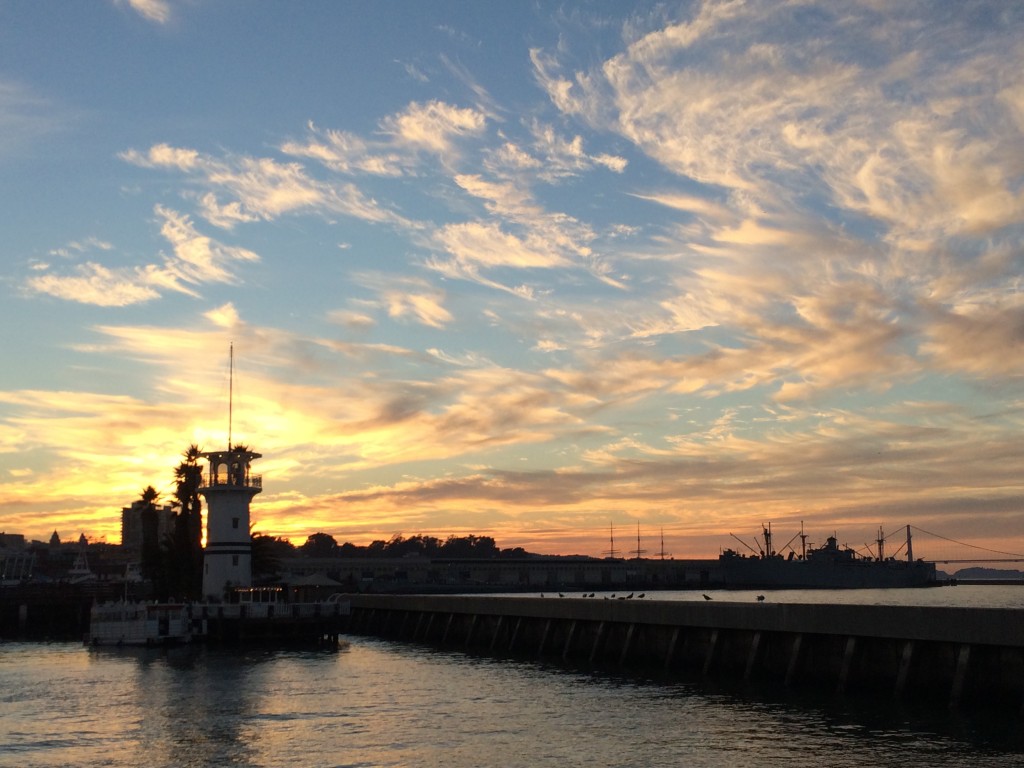Before I started working for ClimateWorks, I thought five months would be a long time and I could enjoy the California sunshine. However, the internship with the Advisory and Research Team at ClimateWorks was so exciting and unforgettable that I cannot believe five months have already passed. I harvested much more than I had expected before the internship. In a surprising twist, the temperature in San Francisco was lower than New York when my internship ended in December! This unusual weather pattern, partly a result of El Nino, reminds me again of the importance and value of climate research.

During my internship, I worked with professionals in the field of climate change research and got inspiration for my capstone project. The internship provided me with an opportunity to review what I learned from the first-year course work at Bard CEP and to apply that knowledge to solve real-world environmental issues. In this process, I also gained hands-on professional skills through my daily work at ClimateWorks.
Analyzing Policy in a Quantitative Model
Through classes at Bard, I learned how to use quantitative models to analyze policies. My internship at ClimateWorks gave me to a chance to think further about how to relate policies with quantitative data, and how scientific quantitative models provide solutions for environmental problems.
My internship at ClimateWorks was to help the team there with their newly develop Carbon Transparency Initiative (CTI). The CTI aims to track leading indicators that shape GHG emission trends at the sector and sub-sector level across a few countries. My first task was summarizing the feedback from our partner Lawrence Berkeley National Laboratory (LBNL) on the early version of CTI-China policy assumptions. Based on the analyses of the CTI models, with other team members I identified where additional effort is needed for mitigation in order to stay on a deep decarbonization pathway for these countries.
LBNL made suggestions to the logic tree of the industry specific iron and steel sector model and the transport sector model. For the CTI-China policy assumptions, LBNL added that there was a lack of specific energy-saving policy such as green building policy.
In the process of summarizing LBNL’s suggestions and assisting the team to prepare our response to LBNL, I discussed with the team members what kind of suggestions were acceptable and what kind of suggestions were not clear enough or required further discussion with LBNL.
Moreover, in order to include more policy into the China model, I reviewed a large number of China’s energy-saving and emission-reduction policies on specific sectors, identified the most important ones, and translated them into indicators in the CTI model. The whole process not only gave me a better understanding about the model’s structure, but also helped me better understand how to build a quantitative model to predict effects of complex environmental policies.
Data Visualization
The new skill that impressed me the most in my work is data visualization that can play an important role in the process of environmental problem solving.
The first time I realized the power of data visualization was while exploring ClimateWorks’ new website. Just before my internship, I found some big changes to the organization’s website. There were many more dynamic charts and graphs that showed emission projections for countries and potential energy and emission savings from sectors. Compared with reports or paragraphs, these infographics give readers a better sense of countries’ emission pathway and can save a lot of time for readers.
During my internship, I found that our team also uses data visualization on presentations prepared for workshops or meetings. Data visualization makes the presentation easier to read and gets better feedback from audience. In my work, I experimented with different kinds of graphs or charts to see which ones were easier to read.
External Relations (XR) Lunch — Keeping the Organization Energetic

Every two weeks, I didn’t need to prepare my lunch for Thursday because we would have XR lunch on that day. Usually we would have different topics for the lunch series such as how to communicate the ClimateWorks brand and what the communications opportunities for a specific program are. In addition, some staff would share their experience from attending external meetings or forums.
The XR Lunch series provide an opportunity for the staff at ClimateWorks to communicate with each other and with external partners (guest speakers). During these lunches, I was able to sit with people from other teams or partner organizations and share our suggestions and experiences. The lunch series made me deeply feel I was a member of the organization and part of a large climate research network. They also enabled me to learn more about other teams or programs. I really like the idea of XR lunch and I think it benefits the organization and its people.
Except for the XR Lunch series, I also attended other seminars such as a seminar hold by Bloomberg New Energy Finance (BNEF) and a shale energy pipelines webinar during myinternship. Those external speakers added value to my learning as I was exposed to broader topics and learned what was going on in the peer group.
In addition, the successful outcome of the 2015 United Nations Climate Change Conference (COP 21) — the Paris Agreement made being at ClimateWorks a special time because the new climate agreement was such a big moment for global climate community. Working in an organization committed to solving climate crisis when the agreement was signed made it feel memorable.
The best kind of learning is Learning by Doing and I am on my may to becoming a professional climate change analyst.
